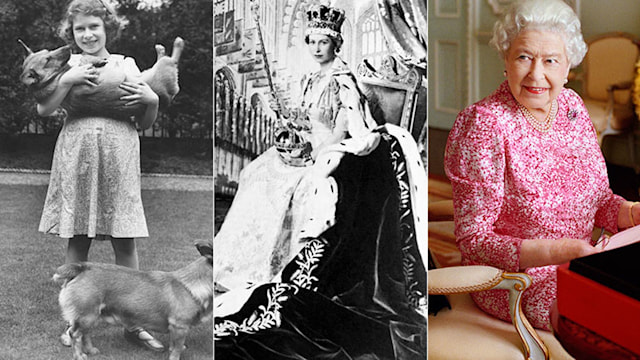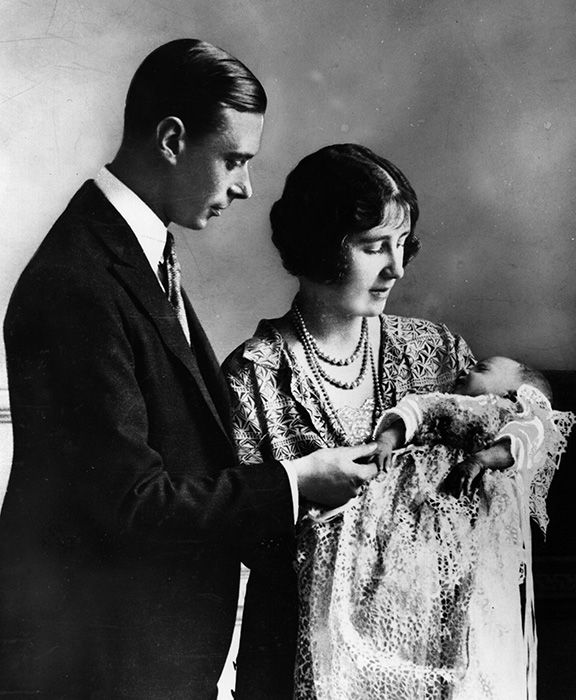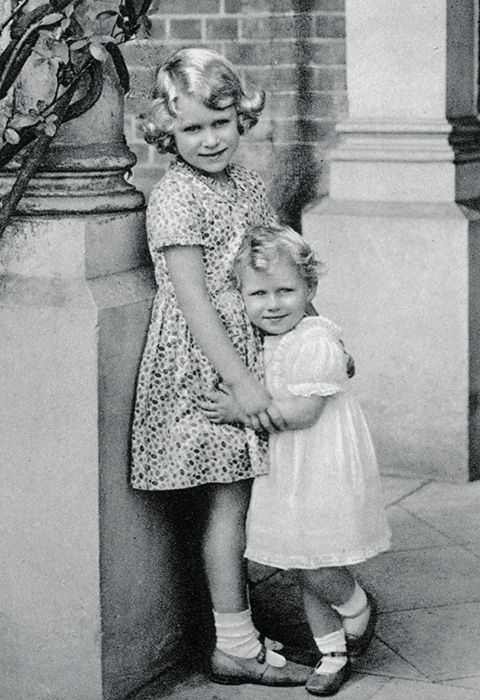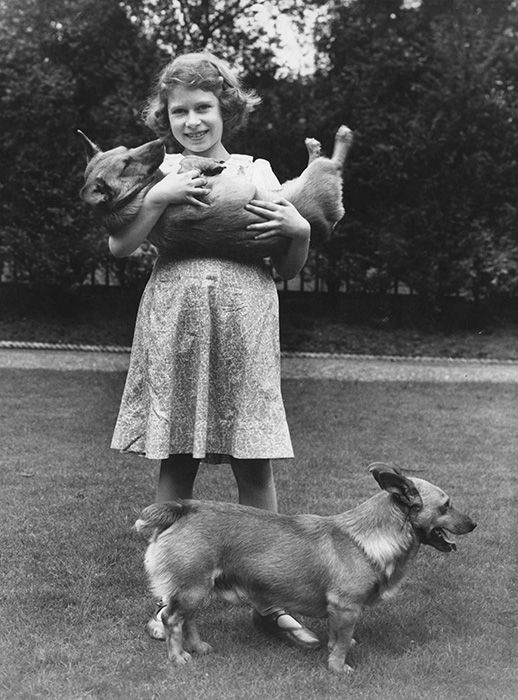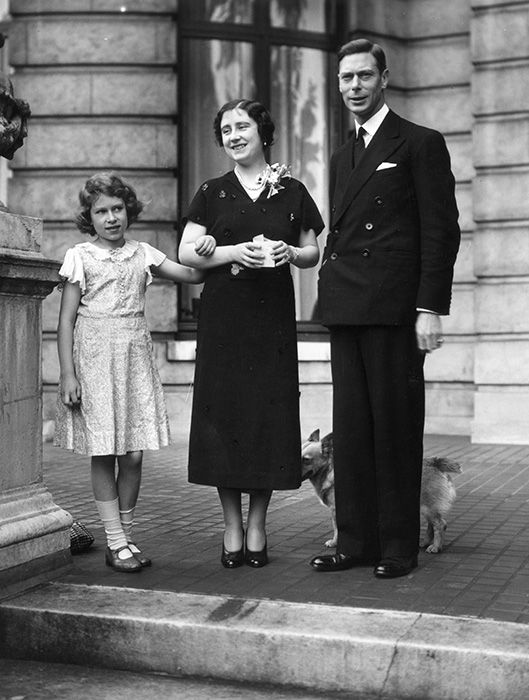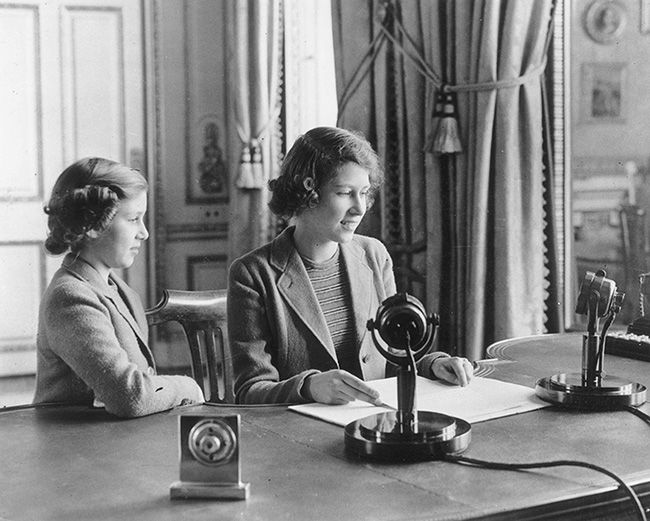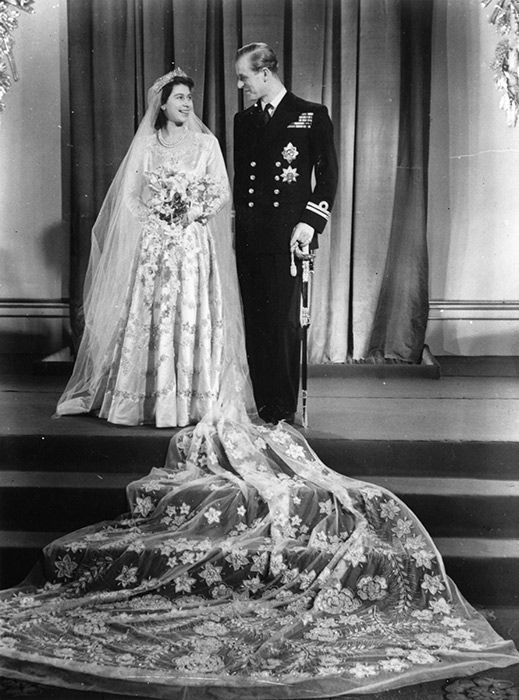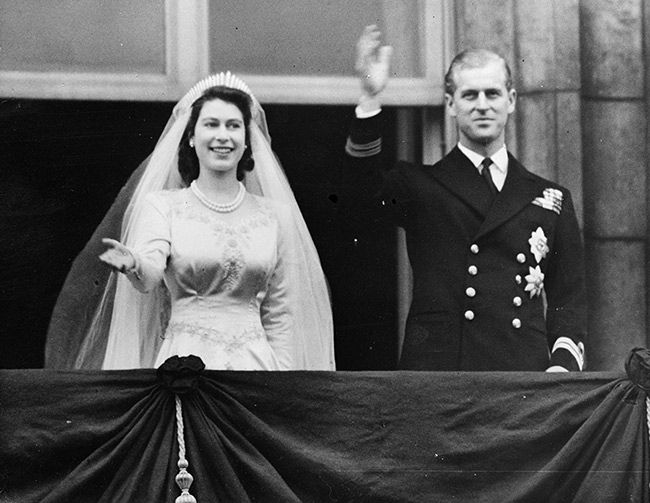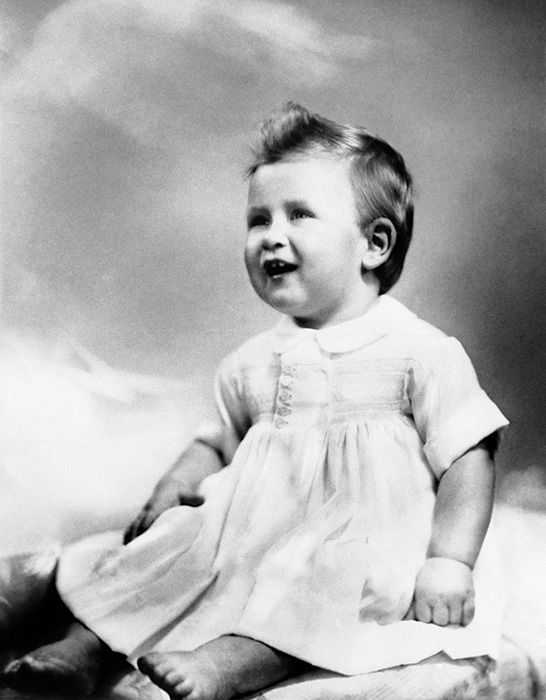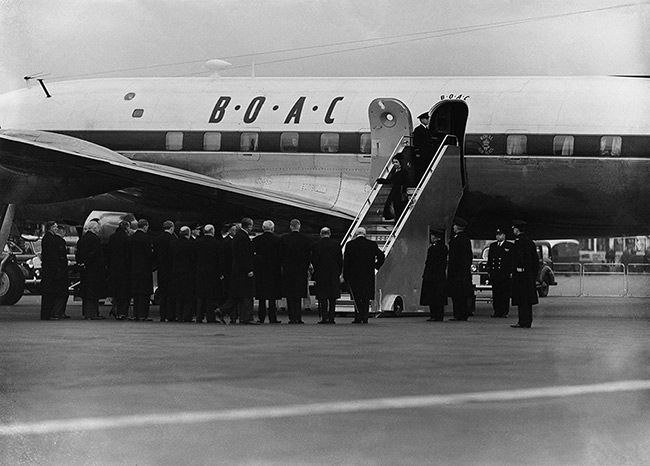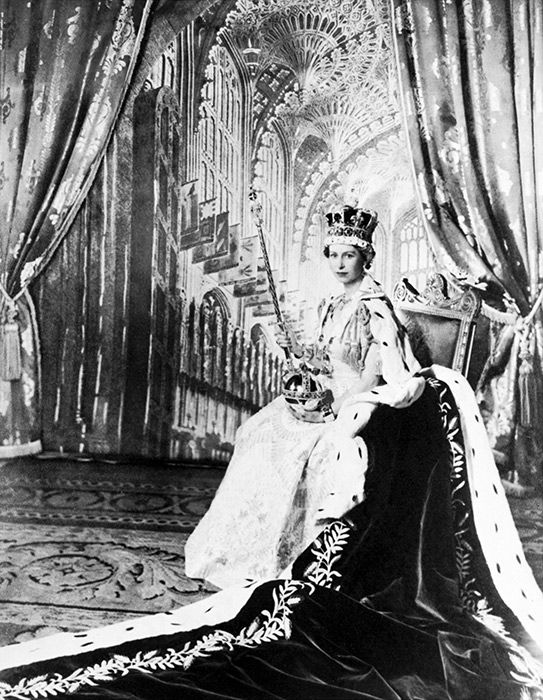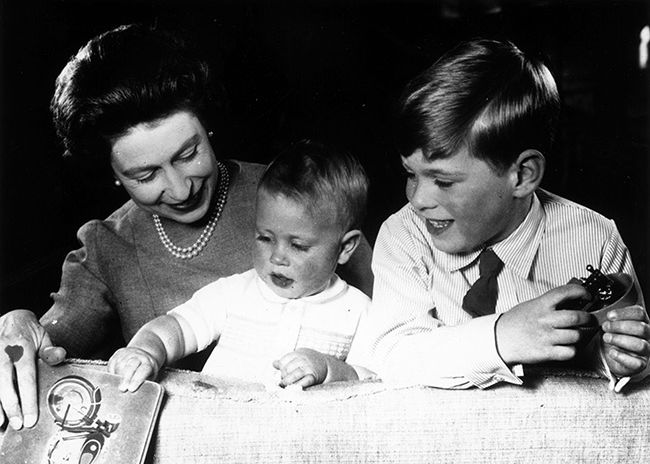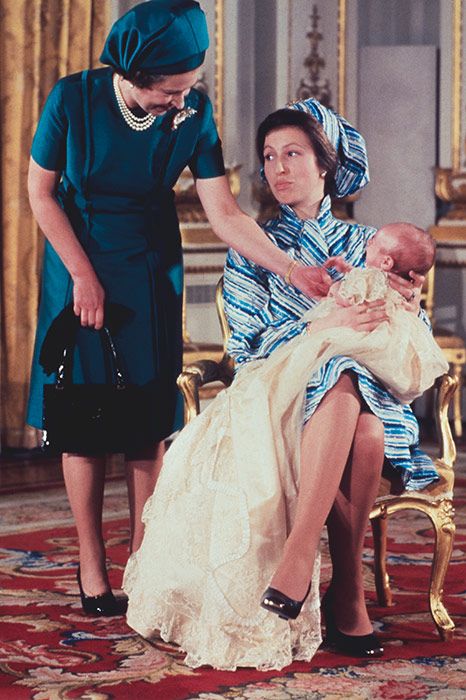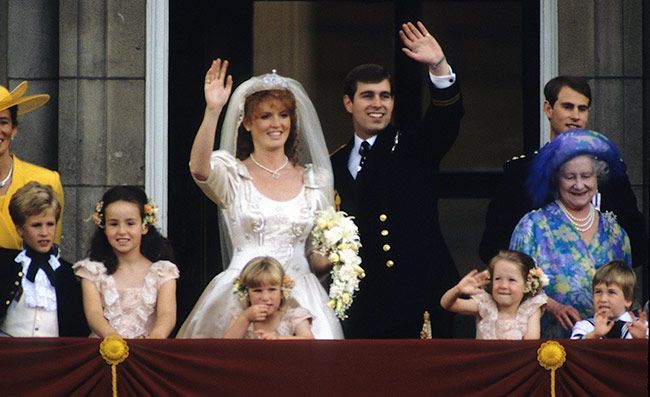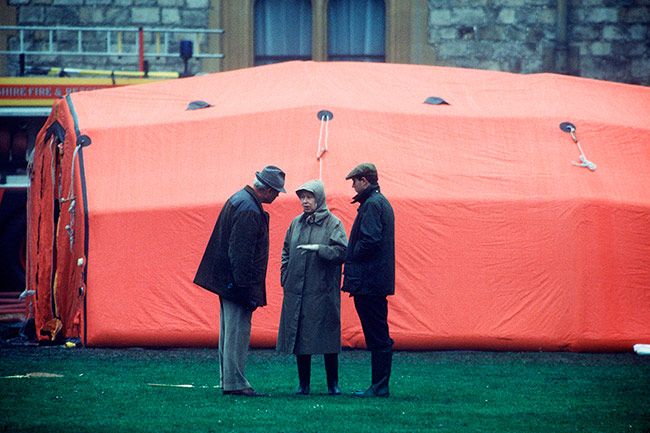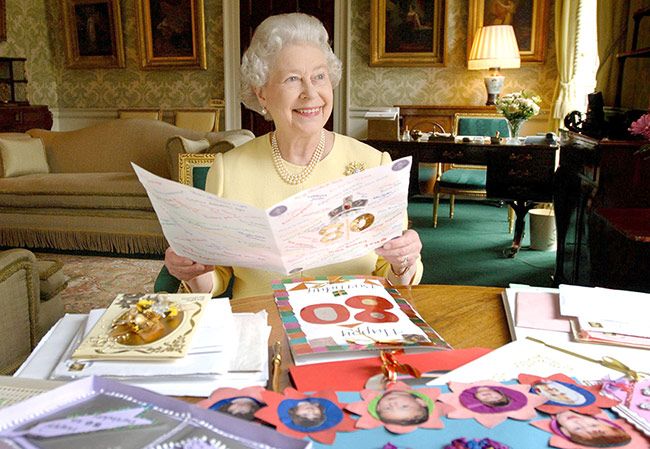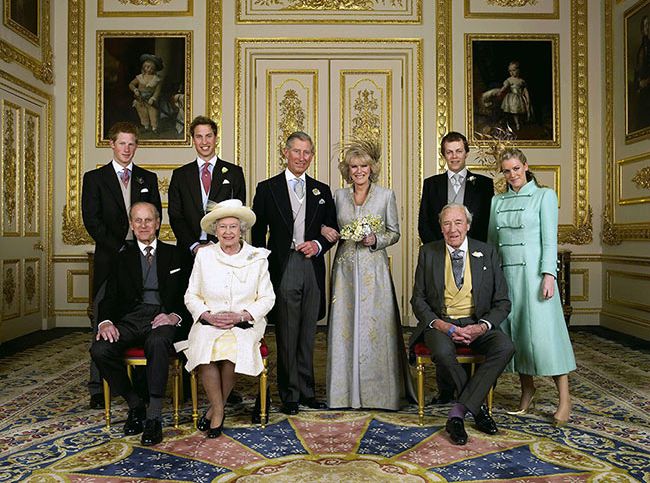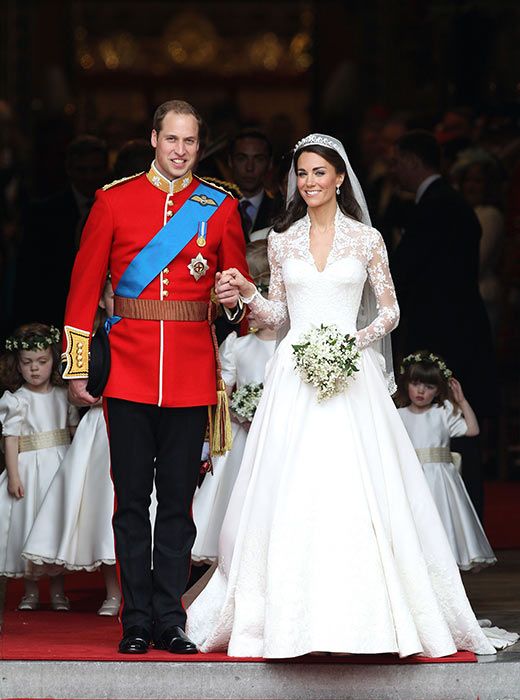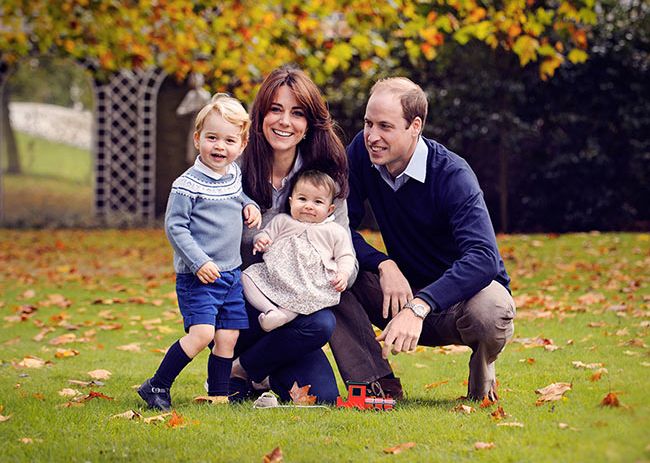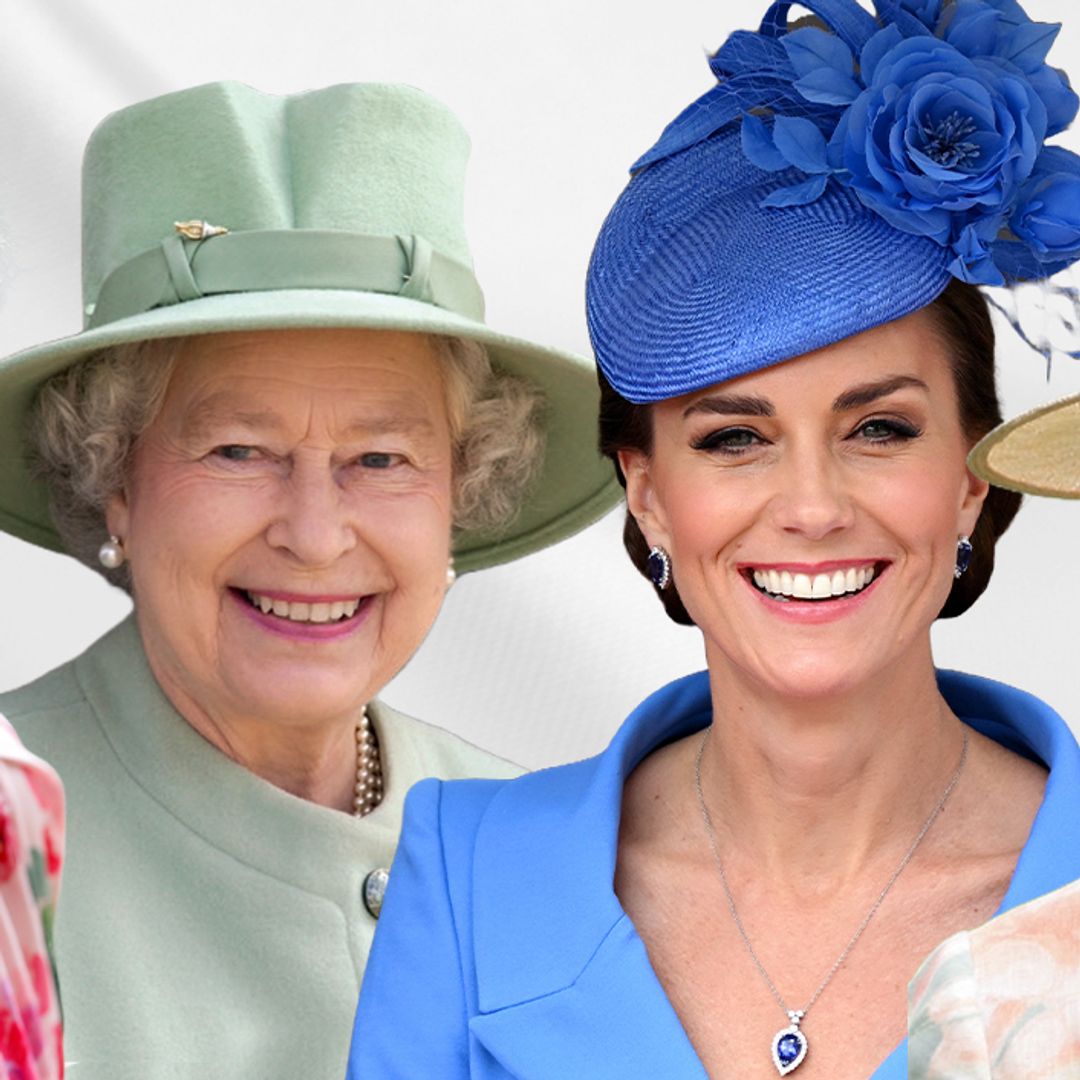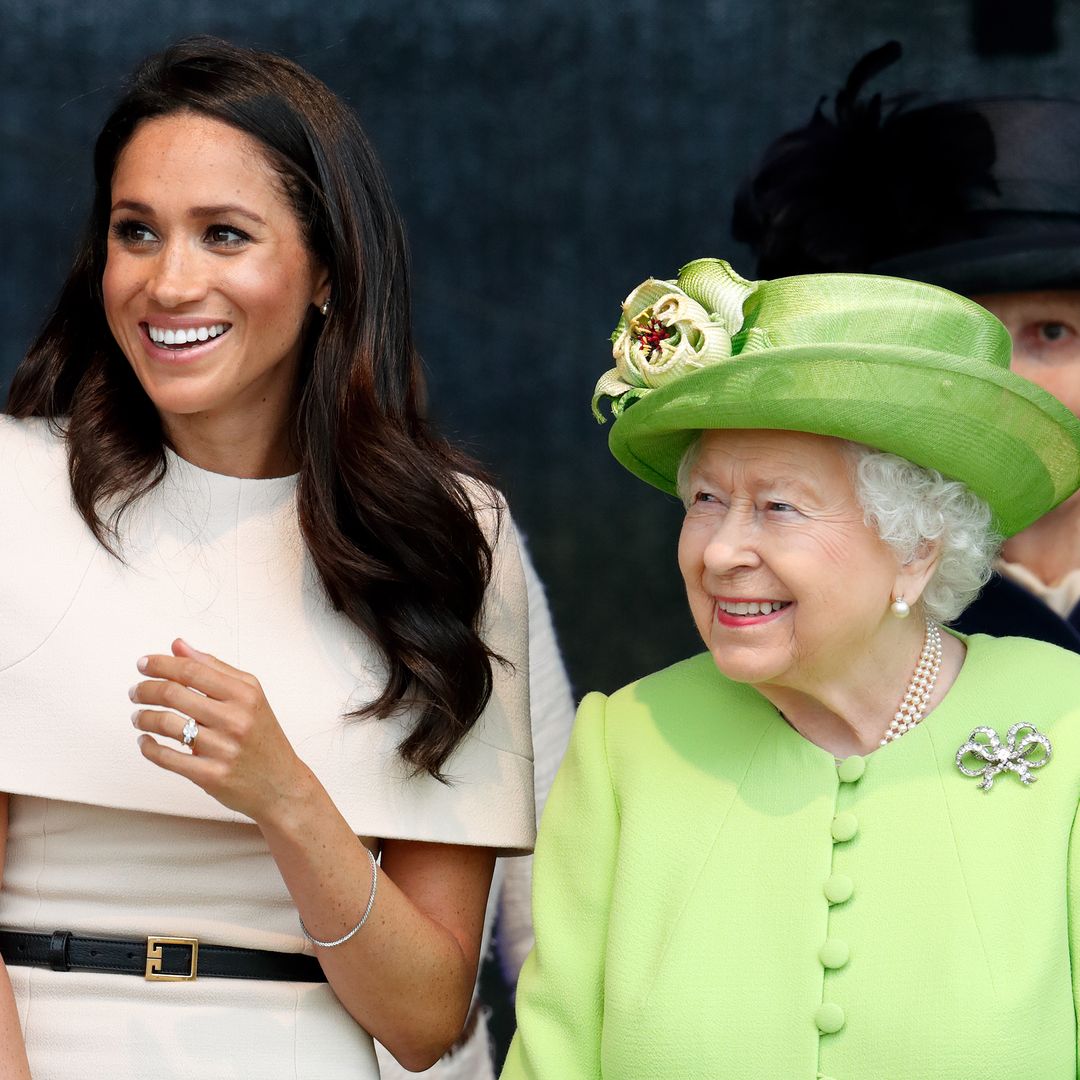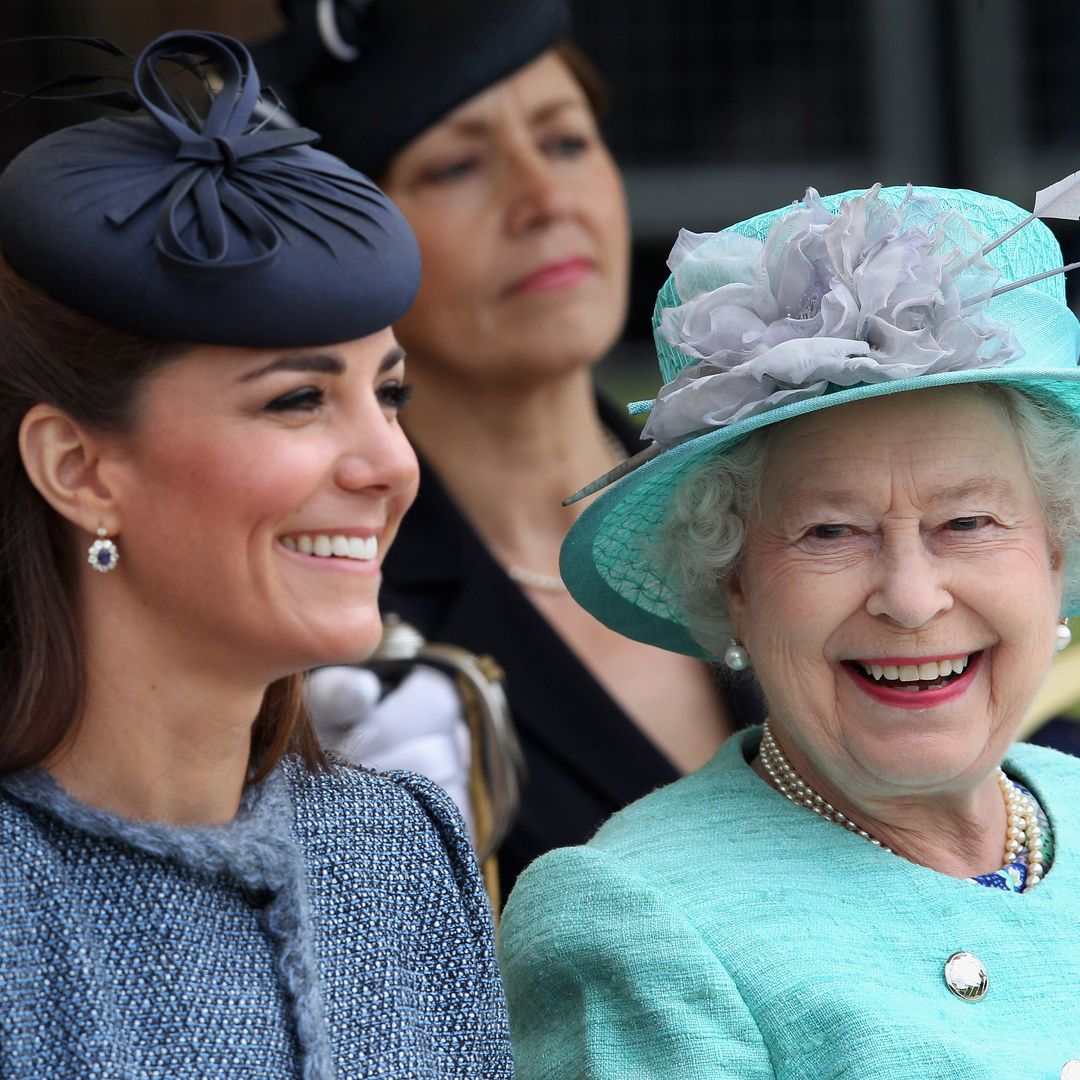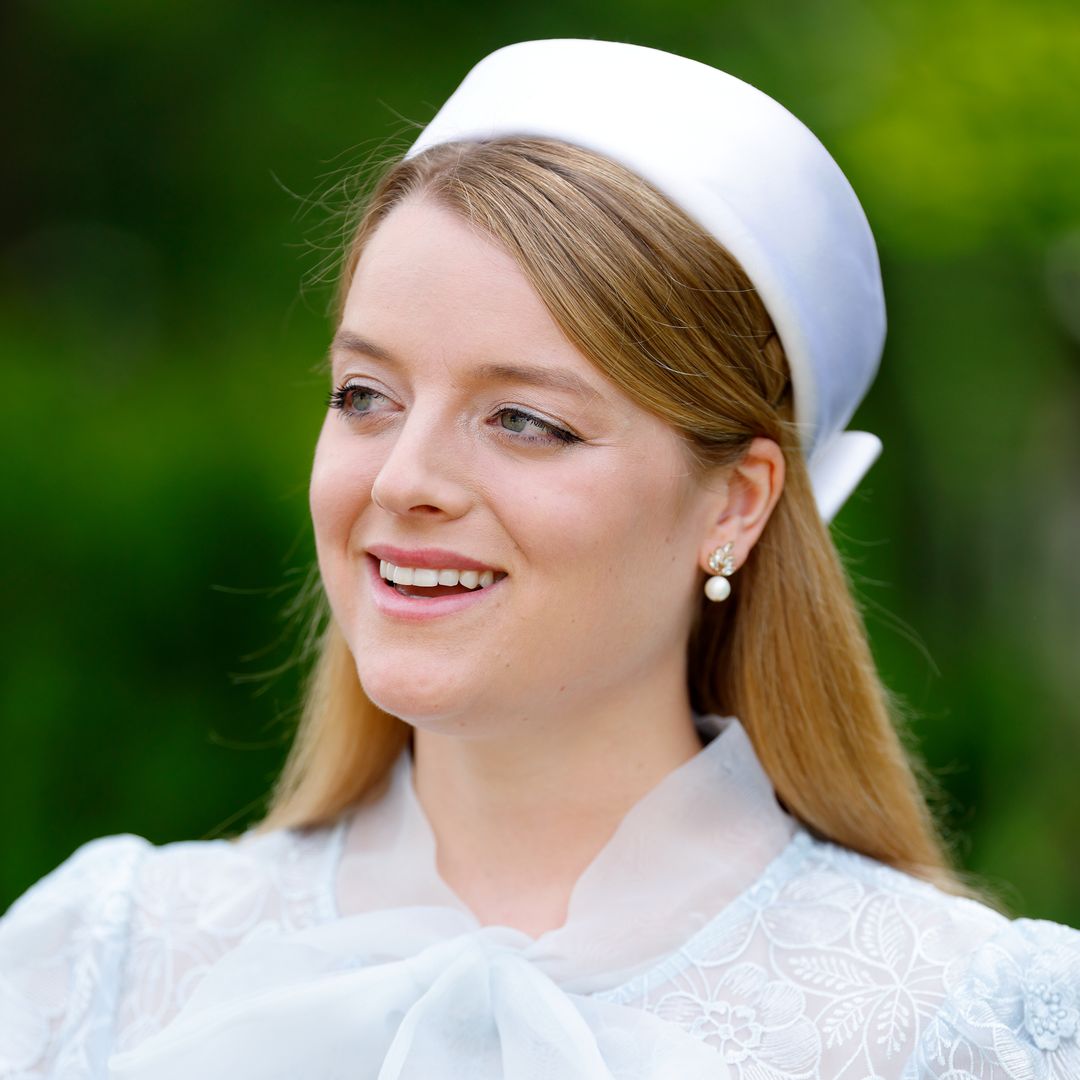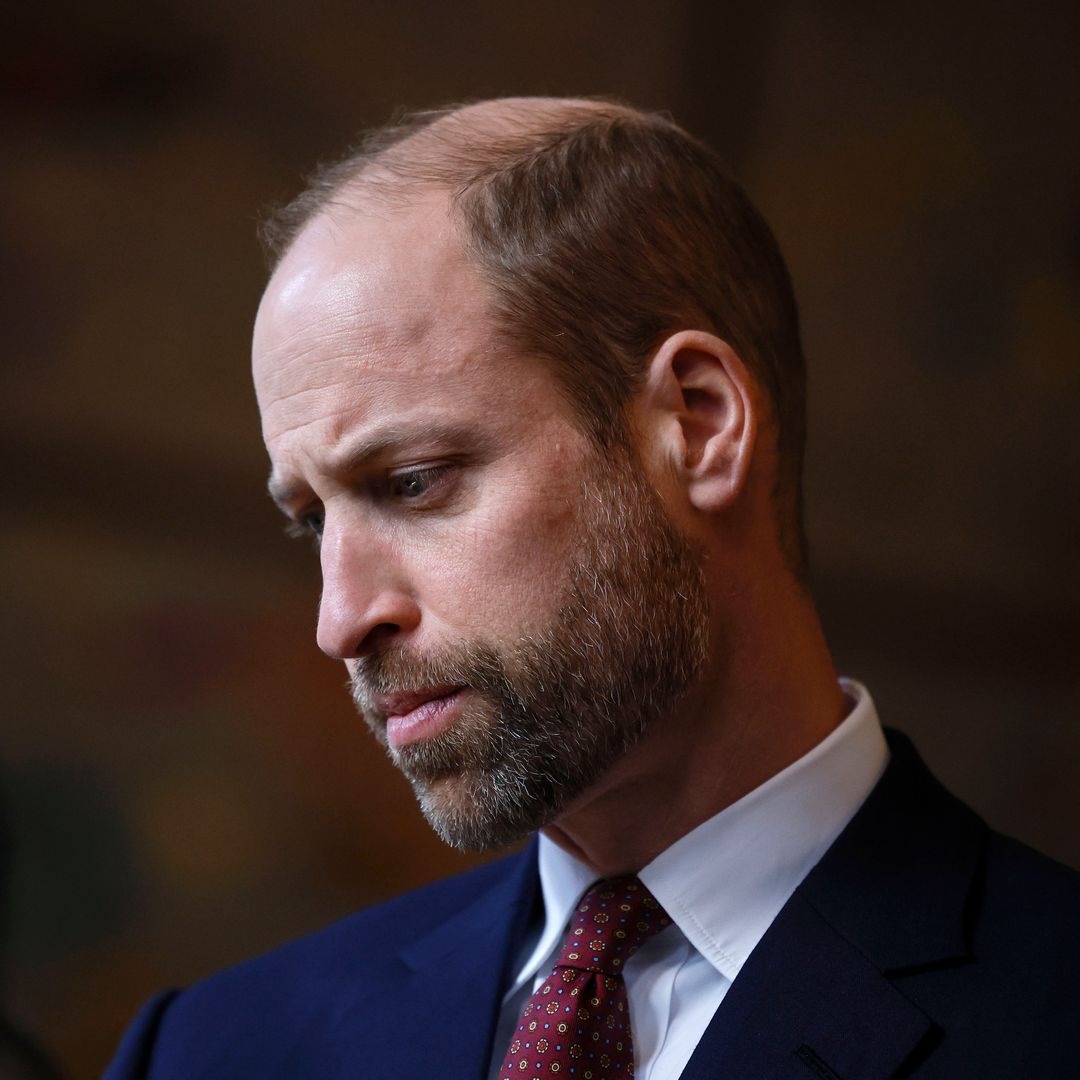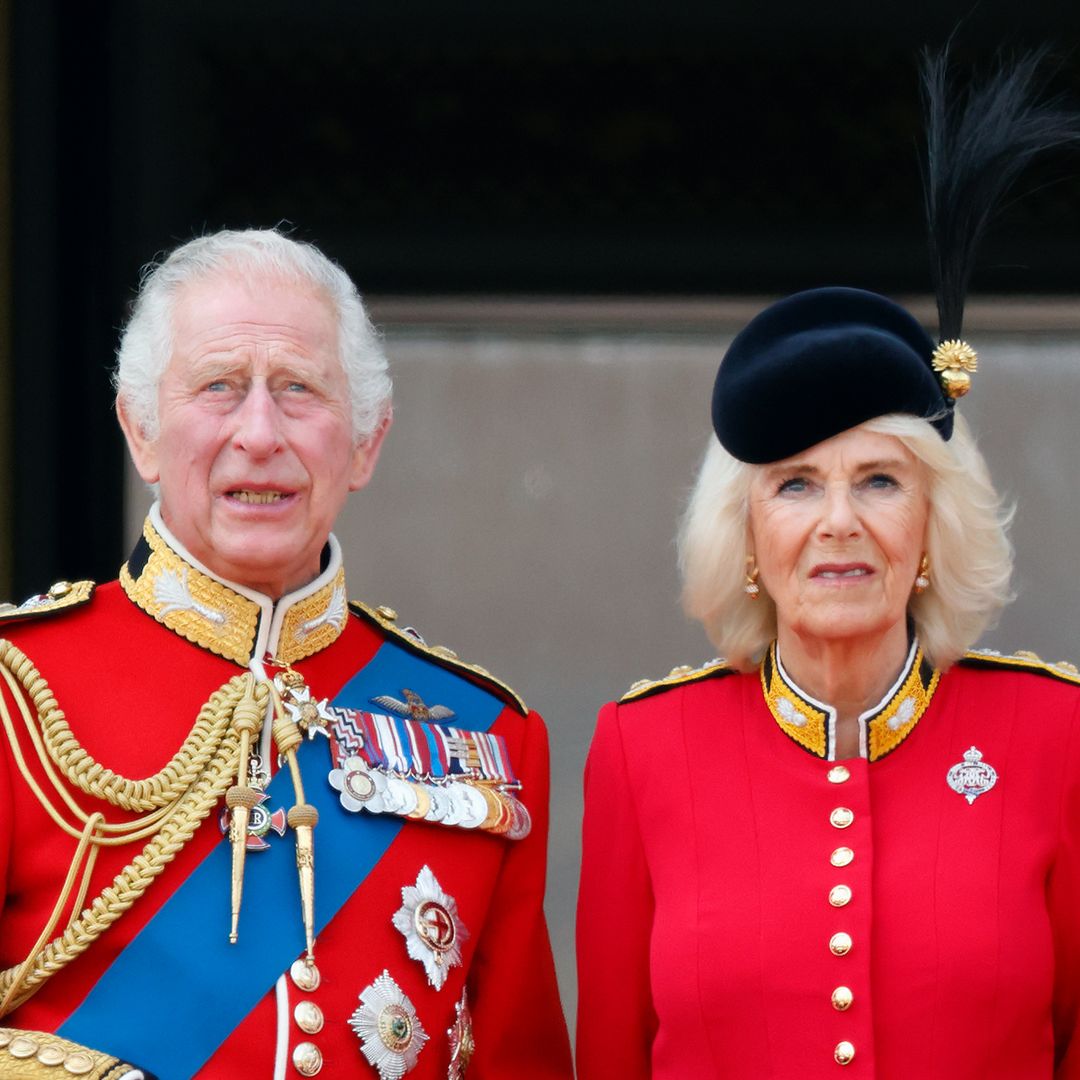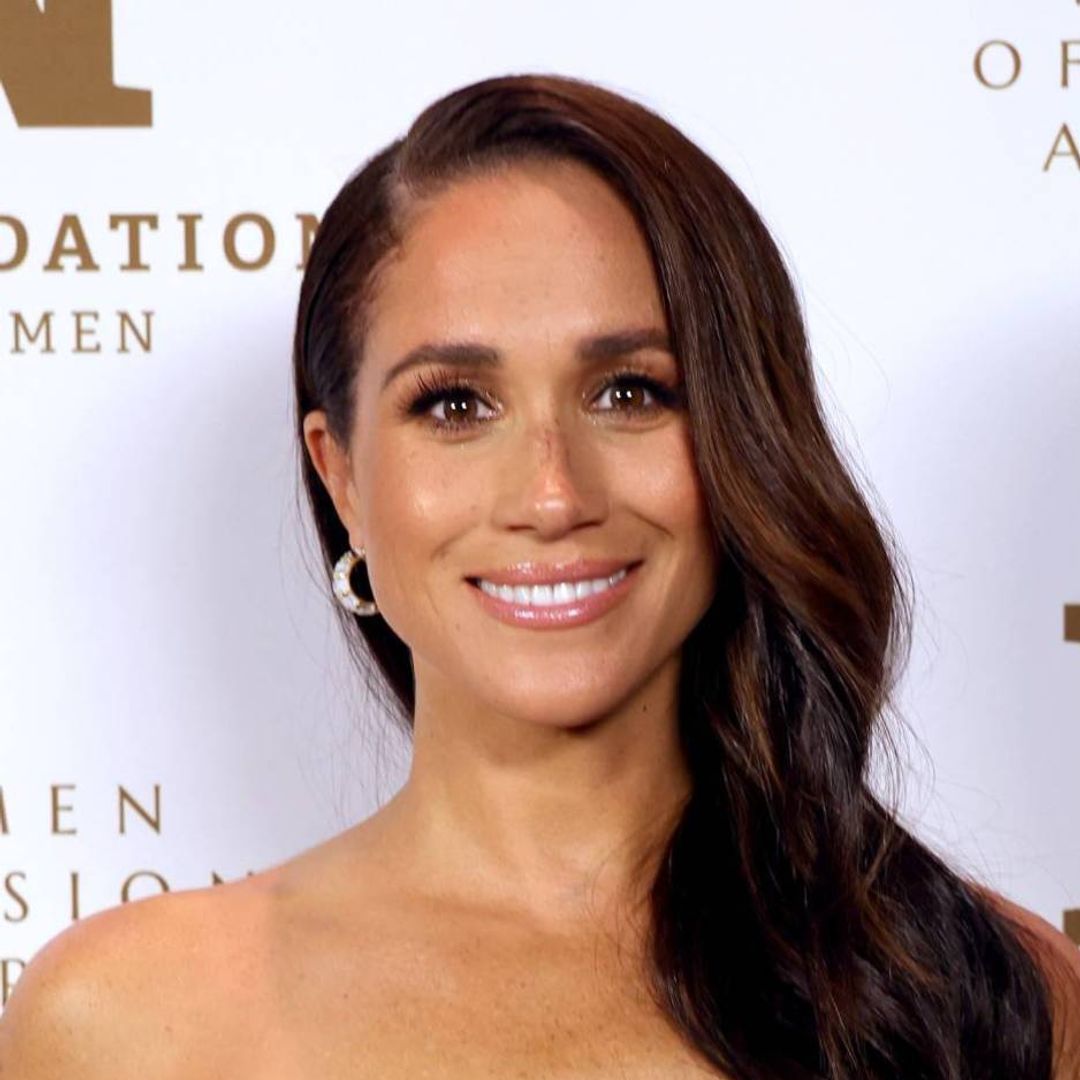When Prince Albert, the Duke of York, and his wife Elizabeth had their first child, a cherubic baby with a sprinkling of golden hair, he wrote to his mother Queen Mary: "You don't know what a tremendous joy it is to Elizabeth and I to have our little girl."
While her birth on 21 April, 1926 was a source of great personal pride, what the Duke, later George VI, could never have imagined was that Princess Elizabeth Alexandra May would eventually be crowned Queen Elizabeth II, becoming respected and admired the world over as 'the Queen of Queens'.
Princess Elizabeth pictured with her parents at her christening ceremony
Elizabeth was third in line to the throne after her uncle Prince Edward and her father. However, Edward, then Prince of Wales, was a healthy young man who was expected to marry and produce an heir of his own. No one imagined that the little Princess would one day occupy the throne.
A LOVING FAMILY
The Duke and Duchess of York adored each other and it was in this warm family atmosphere that their daughter grew up. Four years after Elizabeth's arrival, the Yorks were blessed with another girl, Margaret Rose. It was an idyllic childhood filled with fun and outdoorsy games.
Their governess Marion Crawford – 'Crawfie' – recalled that the sisters were "anxious to do whatever other children did". Lilibet, as she was known within the family, delighted in charades and was a keen swimmer, winning the Children's Challenge Shield at London's Bath Club. She was given her first horse Peggy, aged four, and has remained a passionate equestrian ever since.
Princess Elizabeth, aged six, with her sister Princess Margaret, aged two
Around this time, the family also acquired a Corgi called Dookie who proved popular with the little Princesses, sparking the Queen's lifelong interest in the breed. Her grandparents George V and Queen Mary, though strict with their own children, doted on Elizabeth and Margaret.
With two corgi dogs at her home at 145 Piccadilly, London in 1936
The death of the King, in January 1936 was the first blow to the innocence of the two girls' childhood, precipitating as it did a constitutional crisis. Elizabeth's uncle became Edward VIII, but abdicated before the year was out to marry his divorced mistress Wallis Simpson, stepping down in favour of his brother. Albert took the regnal name George VI to emphasise continuity after the so-called Year of Three Kings.
HEIRESS TO THE THRONE
Aged ten, Elizabeth now found herself the heiress to the throne of the United Kingdom and several other realms around the world. "Does that mean that you will have to be the next Queen?" she was asked by her sister. Upon hearing that, yes, this would be the case, Margaret's reaction was clear: "Poor you," she whispered.
Despite the change in the family's circumstances – or perhaps because of it – they drew even closer, with King George VI referring to them fondly as "Us Four". Aware of how unprepared he himself had felt at having the monarchy thrust upon him, the King put a lot of care and thought into his elder daughter's tutelage. She attended numerous public engagements with her parents, was instructed in constitutional history by Henry Marten, provost of Eton College, and learned French from her governess.
Princess Elizabeth with her father George and mother Elizabeth
Another crisis came with the advent of World War II, much of which the girls spent in Windsor Castle. Accompanied by her sister, in October 1940, then 14, Elizabeth made a radio broadcast to the children of the Commonwealth, many of whom were far from their homes due to the war. The Princess finished by saying: "We know, every one of us, that in the end all will be well; for God will care for us and give us victory and peace. And when peace comes, remember it will be for us, the children of today, to make the world of tomorrow a better and happier place."
She then urged her younger sibling to join her in wishing listeners a goodnight, saying: "Come on, Margaret" – in words that quickly became a catchphrase.
Elizabeth inherited the best traits of her father as a leader. She was serious and thoughtful, while being fiercely loyal to her friends, family and country.
Princess Elizabeth makes her first broadcast, accompanied by her younger sister Princess Margaret
During the War, at the age of 18, the young royal joined the Women's Auxiliary Territorial Service, training as a driver and mechanic, prompting her mother to complain: "We had sparking plugs last night all the way through dinner!".
LOVE AND MARRIAGE
Spark plugs were not all that were on her mind. The young Princess had fallen in love with Prince Philip of Greece and Denmark, a second cousin once removed, whose mother Princess Alice was the great-granddaughter of Queen Victoria. Elizabeth met the man she refers to as her "strength and stay" at the tender age of 13 when she visited Dartmouth Naval College.
Philip, a promising young cadet, had been assigned to show her around. Despite the fact that they both had royal status, Philip's upbringing could not have been more different. His parents were divorced and his family were exiled from Greece. His father lived in the South of France, and his mother spent time as a patient in a psychiatric clinic.
Princess Elizabeth married Philip on the 20 November 1947
In visitors' books, he described himself as "of no fixed abode" and when asked by a journalist what language he spoke at home, he bluntly replied: "What do you mean, at home?".
During the war Philip served honourably with the Mediterranean and Pacific fleets and exchanged letters with his cousin. In one romantic exchange, the smitten war hero wrote: "To have been spared in the war and seen victory, to have been given the chance to rest and to re-adjust myself, to have fallen in love completely and unreservedly, makes all one's personal and even the world's troubles seem small and petty."
In 1946, the couple secretly became engaged after Philip proposed at Balmoral – a moment his fiancée described as "magical". It was a controversial decision since Elizabeth's family was opposed to her marrying so young. But the King finally softened and gave them permission to announce their engagement in April 1947 after his daughter's 21st birthday. The milestone day also gave the Princess the occasion to make her famous pledge of lifelong service to her peoples.
The newlyweds waving to the crowds from the balcony at Buckingham Palace
Speaking during a radio broadcast on a tour of South Africa with her parents and sister, she said: "I declare before you all that my whole life, whether it be long or short, shall be devoted to your service and the service of our great imperial family to which we all belong."
Back at home, their engagement prompted Philip to renounce his Greek citizenship and take the surname Mountbatten from his British maternal grandparents. The couple's wedding took place at Westminster Abbey on 20 November 1947 and broadcast to a worldwide radio audience of 200 million, eager to forget the privations of the war and focus on the radiant bride and her dashing young naval officer.
A year later, firstborn Prince Charles arrived, on 14 November, 1948. Princess Anne followed two years later. The young couple's happiness seemed complete.
Prince Charles when he was one year old
Becoming Queen However, the health of the King, a heavy smoker, was failing. When Princess Elizabeth and Prince Philip departed on a tour of Australia and New Zealand by way of Kenya, father and daughter were both aware that it might be the last time that they would see each other. George VI insisted, despite the coldness of the day, on accompanying Elizabeth to the airport to wish her well. Sadly, the King's foreboding proved right and he died on 6 February 1952 of lung cancer, aged 56.
It was Philip who broke the news to his beloved wife, now Queen, and the couple immediately made arrangements to return home. Elizabeth's private secretary Martin Charteris described her at that moment as "composed, master of her fate". A copy still survives of a telegraph written to the new Queen by her mother to be read on the flight back. It reads simply "To: Her Majesty The Queen All my thoughts and prayers are with you. Mummie Buckingham Palace".
On landing in Britain the new Queen and her consort were met by Prime Minister Winston Churchill. In the accession ceremony held at St James's Palace, the new Queen proclaimed: "By the sudden death of my dear father I am called to assume the duties and responsibilities of sovereignty.
Princess Elizabeth is greeted by Winston Churchill on her return from Africa following the death of her father George VI
"My heart is too full for me to say more to you today than that I shall always work, as my father did throughout his reign, to advance the happiness and prosperity of my peoples, spread as they are all the world over."
CROWNING GLORY
Her coronation, on 2 June 1953, was one of the 20th century's most memorable events, bringing together pomp, pageantry and solemn ritual. At its centre was the 27-year-old Queen, who represented a generation's determination to build a better world following the Second World War.
THE QUEEN'S MOST MEMORABLE SPEECHES
More than 8,000 guests packed into Westminster Abbey to witness the dawning of what was heralded as "a new Elizabethan age", while millions more thronged the streets outside or gathered round television sets newly purchased for the occasion.
Elizabeth was proclaimed Queen in 1952 at age 25
The young Queen chose society couturier Norman Hartnell to dress her for the most momentous occasion of her life. Wearing a magnificent white satin gown embroidered with gold and silver thread and encrusted with pearls, her immaculate dark hair adorned by a sparkling diadem, she possessed movie-star looks combined with a sense of gravitas that made her the nation's ultimate fairytale monarch.
The Queen wearing her Norman Hartnell dress
Outside the Abbey and lining the procession route to The Mall, two million patriotic spectators braved grey skies and drizzle for a dazzling glimpse of their newly-crowned Queen.
A MODERNISING MONARCH
By her 30s, now well established in her role as head of state, the Queen was ready to relish the joys of motherhood again. Prince Andrew was born in 1960, with Prince Edward following two years later. There were celebrations too for the Queen's sister Princess Margaret, who married photographer Antony Armstrong-Jones in 1960, although her choice of husband – a commoner – was frowned upon in some quarters.
Times were changing in all walks of British life in the Swinging Sixties, something recognised by the Queen, who invested John Lennon, Paul McCartney, Ringo Starr and George Harrison – collectively known, of course, as The Beatles – with their MBEs at Buckingham Palace in 1965.
Queen Elizabeth II plays with Princes Edward and Andrew at Windsor Castle
She was integral to another unforgettable moment when, in 1966, she handed England football captain Bobby Moore the World Cup after the team's 4-2 win over West Germany.
It was an important time in British politics, too. The Queen received her first Labour Prime Minister – Harold Wilson – in 1964.
On the wider stage, she paid her first visit to the Indian subcontinent as Queen in 1961. The same year, she welcomed the newly inaugurated President John F Kennedy and his wife Jackie to Buckingham Palace.
THE QUEEN'S CELEBRITY FAN CLUB
By the 1960s, the Queen was experienced and confident enough to let cameras record a behind-the-scenes documentary that showed the sovereign and her family at work and at play. Royal Family aired in 1969, the same year that she invested Charles as Prince of Wales. Elizabeth II had just turned 43 and her son 21.
CHANGING TIMES
The 1970s was a decade of both celebration and mourning for the Queen. Five years after marking her silver wedding anniversary in 1972, she commemorated 25 years on the throne and her jubilee was an occasion of public merriment, with colourful street parties all over Britain.
Then aged 51, the Queen embarked on six jubilee tours of the UK, taking her to 36 counties. The climax of celebrations took place in June, to coincide with her official birthday, and she used the occasion to reaffirm her commitment to her subjects.
"When I was 21, I pledged my life to the service of our people," she said. "Although that vow was made in my salad days, when I was green in judgment, I do not regret nor retract one word of it."
The decade also saw family celebrations, with the marriage of Princess Anne and Captain Mark Phillips at Westminster Abbey in 1973. Their son Peter was born in Silver Jubilee year and a photo of the Queen holding her first grandchild was released to mark her 52nd birthday.
The Queen and Princess Anne pictured with Peter Phillip at his christening
But there were times of deep sorrow, too. Her sister Princess Margaret's marriage to the Earl of Snowdon ended in divorce in 1978 while the following year her beloved cousin Earl Mountbatten of Burma was killed by an IRA bomb.
On a political and social level, her country was changing rapidly. The 1970s saw Britain join the European Economic Community, the first jumbo jet land at Heathrow and the end of shillings, crowns and ten-bob notes with decimalisation. And then in May 1979, Margaret Thatcher made history when she was elected the UK's first female Prime Minister.
THE JOY OF GRANDCHILDREN
On a personal level, the 1980s brought hope for the Queen. The fairytale wedding of her heir the Prince of Wales to Lady Diana Spencer captured the hearts of the nation and the mood soared even higher after the births of Princes William and Harry.
In 1986, her dashing naval officer son Prince Andrew married Sarah Ferguson, whose down-toearth manner was a hit with her mother-in-law.
Prince Andrew married Sarah Ferguson in 1986
The Queen celebrated her 60th birthday that same year, an occasion she marked by releasing a photo taken of her by Prince Andrew.
The birth of her granddaughters Zara Phillips and Princess Beatrice in this decade brought her great joy. Renowned for her composure, the Queen demonstrated unflappable calmness when six blank shots were fired at Trooping the Colour in 1981 and when an intruder broke into Buckingham Palace and managed to enter her bedroom before she raised the alarm.
CHALLENGING YEARS
Although it could be regarded as the most challenging decade of the Queen's reign, the 1990s also had some cause for celebration – the Prince of Wales turned 50, Princess Eugenie was born and there were two royal weddings: the Princess Royal tied the knot with Commander Timothy Laurence in 1992, a few months after the official end of her marriage to Captain Mark Phillips, and Prince Edward married Sophie Rhys-Jones in St George's Chapel at Windsor Castle.
However, the royal family also had to face a series of catastrophes. In November 1992, fire swept through Windsor Castle, destroying 100 rooms. A public outcry over who would pay for the repairs led to the Queen agreeing to meet 70 per cent of the costs, opening Buckingham Palace to the public during summer months to generate funds.
The Queen and Prince Edward inspecting the damage after the fire at Windsor Castle
Meanwhile, news of the breakdown of the marriage of the Duke and Duchess of York and reports of marital difficulties between the Prince and Princess of Wales also contributed to what the Queen was to call her "annus horribilis".
However, worse was to come. In 1997, a year after her divorce from Charles, Diana, Princess of Wales was killed in a car crash in Paris. The Queen, now 71, was criticised when she remained at Balmoral with her grandsons William and Harry rather than appear in public as the nation mourned. Five days later, she returned to Buckingham Palace and spoke on TV, saying: "We have all been trying in our different ways to cope."
Her Majesty went on to pay tribute to her former daughter-in-law, saying: "She was an exceptional and gifted human being. In good times and bad, she never lost her capacity to smile and laugh, nor to inspire others with her warmth and kindness. I admired and respected her – for her energy and commitment to others, and especially for her devotion to her two boys."
BETTER TIMES
The new decade began on a high note with the Queen Mother's landmark 100th birthday on 4 August 2000. But just two years later, within a matter of weeks, the Queen lost both her mother and her sister Princess Margaret.
Happier times arrived with the celebration in June 2002 of the Golden Jubilee. To mark the event the nation took to the streets – and guitarist Brian May to the roof of Buckingham Palace, where he played the national anthem.
Pictures of her celebrating her 80th birthday in 2006, showed the delighted monarch opening cards and messages from around the world.
The Queen reading birthday cards sent to her for her 80th birthday
Otherwise, it was a sober time. This was a world rapidly changing, with the destruction of New York's World Trade Center twin towers in September 2001, the dark shadow of international terrorism acknowledged in the Queen's address to Parliament in 2002. She shared in the national mourning after the London bombings in July 2005 – the day after the capital won the right to host the 2012 Olympic Games.
Some light relief was provided by Michelle Obama, who broke with royal protocol by hugging Her Majesty when she and President Obama visited London in 2009. It was described by a Palace spokesperson as a "spontaneous and mutual display of affection and appreciation".
There were two weddings and an anniversary – the Prince of Wales married Camilla Parker Bowles in a civil ceremony in Windsor Guildhall in April 2005; and in May 2008 the Queen's eldest grandson Peter Phillips married Autumn Kelly at Windsor Castle.
Prince Charles married Camilla in 2005
In December 2007, the Queen and the Duke of Edinburgh celebrated their diamond wedding anniversary with a service of thanksgiving in Westminster Abbey. The decade ended with the 60th anniversary of the Commonwealth celebrated by the Queen at the Commonwealth Heads of Government meeting in Trinidad and Tobago.
THE GOLDEN AGE OF ELIZABETH
This current decade could be described as a decade of joy for the Queen, with the marriage of her grandson, who will one day be King, and the birth of his son, continuing the royal line.
The proud grandmother was on hand to offer her advice, easing the groom's worries about the guest list for his wedding. "Start with your friends first and go from there," she told Prince William.
Prince William married Kate Middleton in 2011
Her granddaughter Zara Phillips also married England rugby union star Mike Tindall in Edinburgh in 2011, but it was the wedding of Prince William to Catherine Middleton at Westminster Abbey in April of that year that was the real highlight for the royal family and the nation.
The following year, the Queen celebrated 60 years as monarch with a Diamond Jubilee weekend of celebrations around the country. A 1,000-boat flotilla proceeded down the Thames, there was a concert at Buckingham Palace and a service of thanksgiving at St Paul's Cathedral. In an official message to the country, Her Majesty promised: "I dedicate myself anew to your service."
In July that year, she delighted everyone with her special appearance at the London 2012 Olympics Opening Ceremony, stealing the scene from Daniel Craig's James Bond in a specially filmed spoof.
Two years after the wedding of William and Kate, further happiness followed with the birth of Prince George. A historic picture with the Queen and her three heirs – the Prince of Wales, Duke of Cambridge and the baby Prince – commemorated her greatgrandson's christening.
Prince William and Kate with their two children, Prince George and Princess Charlotte
When the Cambridges' daughter Princess Charlotte was born she told visitors to Buckingham Palace: “We love having another girl."
As she approaches her 90th birthday, the Queen is enjoying some of her happiest years. Prince Philip remains by her side, stoutly seeing off minor health scares. And she shows few signs of slowing down.
90 REASONS TO SALUTE HER MAJESTY
In 2011, she scored a diplomatic coup with a visit to the Republic of Ireland, the first by a British monarch for 100 years and considered an important step forward in relations between the two nations. Guests were delighted to hear the Queen speak Gaelic, addressing a visibly surprised President Mary McAleese with the words "A Úachtárain agus a chairde", meaning "President and friends".
On the 70th anniversary of the D-Day commemorations in 2014, amid a phalanx of royalty and heads of state, the Queen was the unmistakable star of the proceedings, given pride of place by the French organisers at every event.
In 2015, the Queen become Britain's longest serving monarch
Then in 2015, there was a state visit to Germany and a trip to Malta for the Commonwealth Heads of Government meeting in November.
Last year, the Queen surpassed her great-great-grandmother Victoria's record as Britain's longest serving monarch. Our recordbreaking sovereign spent the day doing what she has always done, quietly working for the good of her people, fulfilling that long ago pledge made on her 21st birthday and repeated steadfastly down the years.
